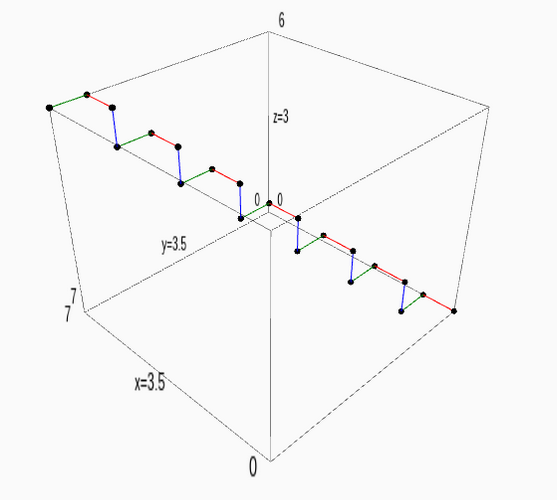Maybe you can try something of the form
# list of points
pts = [(0, 0, 0), (1, 0, 0), (1, 1, 0), (1, 1, 1), (2, 1, 1), (2, 2, 1), (2, 2, 2), (3, 2, 2), (3, 3, 2), (3, 3, 3), (4, 3, 3), (4, 4, 3), (4, 4, 4), (5, 4, 4), (5, 5, 4), (5, 5, 5), (6, 5, 5), (6, 6, 5), (6, 6, 6), (7, 6, 6), (7, 7, 6)]
# some red segments
red_segments = [[pts[i],pts[i+1]] for i in range(len(pts)-1) if i%3==0]
# some green segments
green_segments = [[pts[i],pts[i+1]] for i in range(len(pts)-1) if i%3==1]
# some blue segments
blue_segments = [[pts[i],pts[i+1]] for i in range(len(pts)-1) if i%3==2]
# empty graphics object
P=Graphics()
for rs in red_segments:
P += line3d(rs,color='red')
for gs in green_segments:
P += line3d(gs,color='green')
for bs in blue_segments:
P += line3d(bs,color='blue')
P+=point3d(pts,color='black')
P
Sample output:

Update: Removed bug on 2nd line of code and added a last line (curiously P.show()does not actually show the plot in cloud.sagemath.com).


